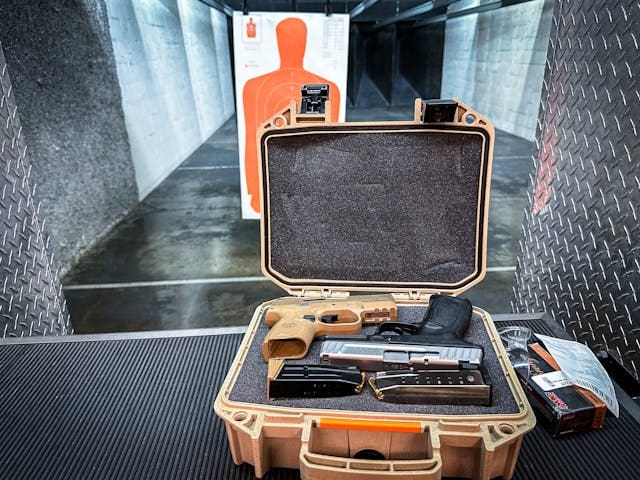Moving a heavy safe tests planning, patience, and muscle. Each doorway, stairwell, and hallway becomes an obstacle, and every mistake risks damage to property or people. The process isn’t just about strength; it’s about foresight—choosing the right tools, setting clear roles, and preparing for the stubborn weight that resists shortcuts.
More homeowners and businesses are adding safes for protection, but placement can be as important as the safe itself. A poorly chosen route or sloppy installation weakens security and leaves scars on walls and floors. Careful measuring, padded pathways, and well-coordinated teamwork turn a daunting task into a clean, safe result.
Picking the Right Moving Gear From the Start
Choosing the right equipment at the outset makes every step safer. Heavy gun safes for sale like those offered by online retailers demand a dolly rated well above their weight, ideally fitted with pneumatic tires to roll smoothly across thresholds and uneven surfaces without sudden jolts. Pairing it with heavy-duty ratchet straps locks the safe securely to the frame, stabilizing movement during turns and stair transitions.
On finished floors, sliders and low-profile protectors prevent sticking, scratching, and residue. Padded corners absorb impact against walls or doorframes, while sturdy floor guards shield thresholds from gouges. Thoughtful redundancy—such as two straps instead of one—adds a margin of safety when handling unpredictable weight.
Planning Access Points and Obstacles in Advance
Safe moves succeed when routes are mapped with care. Measure doorways, hallways, stair widths, ceiling height, and landing depth, then compare these figures against the safe’s footprint and diagonal. Sketching the path highlights thresholds, corners, and potential squeeze points before weight is on the move.
Clear rugs, light fixtures, and protruding details that might snag progress. Removing a door from its hinges can make the difference in a tight fit. Assign defined roles—lead, spotters, and communicator—so helpers act in sync. Protect floors with plywood or runners, and rehearse tricky spots in advance. Preparation eliminates stalls and lowers risk.
Protecting the Home While Moving Indoors
Safeguarding the home during a safe move requires as much thought as lifting the safe itself. Wrapping the unit in thick moving blankets and foam guards protects walls, doorframes, and the safe’s finish. Floors benefit from layered protection—rosin paper, runners, or sturdy plywood sheets at thresholds—while taped edges prevent slipping under weight.
Banisters and railings can be shielded with foam insulation, and nearby furniture should be covered to avoid accidental scrapes. Temporary painter’s tape marks high-contact spots where clearance is tight. With each protective layer in place, helpers move with confidence, knowing that steps taken beforehand reduce the chance of costly, avoidable damage.
Positioning and Anchoring for Daily Use
A safe tucked behind a false panel or inside a closet blends access with discretion. Prefer a solid substrate—concrete slab or wall studs—so anchor points bite. Trace the base plate, use a level for alignment, mark bolt centers with a pencil, and center-punch before drilling to keep holes accurate.
Bolt choices depend on substrate: wedge or sleeve anchors in concrete, 1/2-inch lag bolts into joists for wood, and stainless hardware where moisture is a concern. Countersink with proper bits, add large-diameter washers and lock nuts, and check tightness after settling. A common practical choice: a 1/2-inch lag bolt into a joist with a washer for steady daily stability.
Deciding When Professional Movers Are the Safer Choice
Some safe moves cross into professional territory. Units weighing over 600 pounds, multi-story routes, sharp turns, or installations requiring hoists or cranes all raise the stakes. Beyond physical strain, liability rules and building restrictions often demand specialists with the right equipment and permits.
Seek movers who provide pneumatic dollies, hoisting options, and anchoring services in their quotes. Strong indicators of reliability include references, photos of past work, and written guarantees outlining placement standards and damage coverage. The presence of full insurance gives peace of mind, and a clear contract cements accountability. Professionals bring efficiency and reduce costly mistakes.
Moving a safe requires more than strength; it demands planning and the right precautions. Rated equipment, planned routes, and protective barriers reduce injury risks and prevent costly damage while keeping placement precise. Clear task assignments, practice runs, and padded surfaces protect both helpers and the safe itself. When tight corners, upper floors, or excessive weight make the job unsafe, professional movers provide efficiency backed by insurance and experience. Respect the weight, prepare thoroughly, and bring in expertise when needed. Secure installation comes from anticipating obstacles and controlling the process before they turn into costly setbacks.
The New Jersey Digest is a new jersey magazine that has chronicled daily life in the Garden State for over 10 years.
- Staffhttps://thedigestonline.com/author/thedigeststaff/
- Staffhttps://thedigestonline.com/author/thedigeststaff/
- Staffhttps://thedigestonline.com/author/thedigeststaff/
- Staffhttps://thedigestonline.com/author/thedigeststaff/


